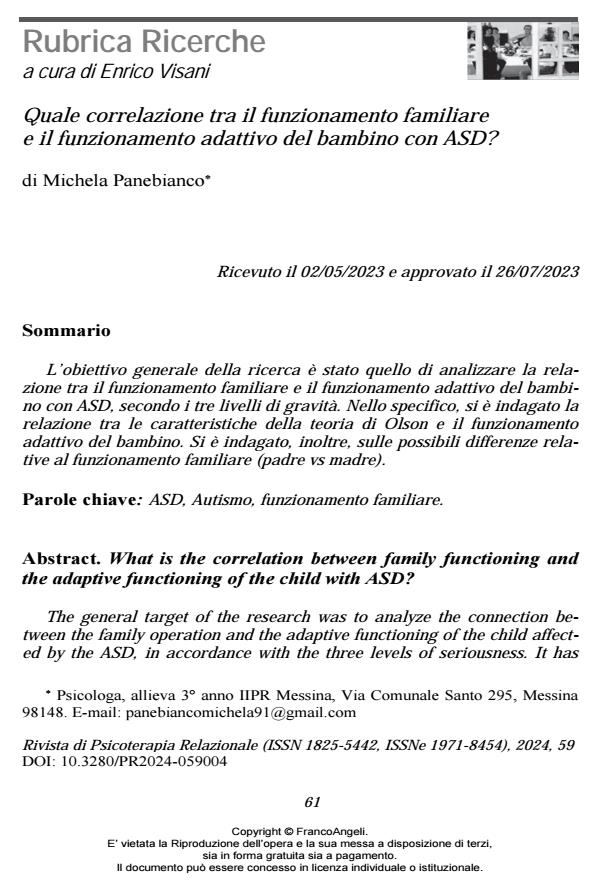Quale correlazione tra il funzionamento familiare e il funzionamento adattivo del bambino con ASD?
Titolo Rivista RIVISTA DI PSICOTERAPIA RELAZIONALE
Autori/Curatori Michela Panebianco
Anno di pubblicazione 2024 Fascicolo 2024/59
Lingua Italiano Numero pagine 21 P. 61-81 Dimensione file 341 KB
DOI 10.3280/PR2024-059004
Il DOI è il codice a barre della proprietà intellettuale: per saperne di più
clicca qui
Qui sotto puoi vedere in anteprima la prima pagina di questo articolo.
Se questo articolo ti interessa, lo puoi acquistare (e scaricare in formato pdf) seguendo le facili indicazioni per acquistare il download credit. Acquista Download Credits per scaricare questo Articolo in formato PDF

FrancoAngeli è membro della Publishers International Linking Association, Inc (PILA)associazione indipendente e non profit per facilitare (attraverso i servizi tecnologici implementati da CrossRef.org) l’accesso degli studiosi ai contenuti digitali nelle pubblicazioni professionali e scientifiche
L’obiettivo generale della ricerca è stato quello di analizzare la relazione tra il funzionamento familiare e il funzionamento adattivo del bambino con ASD, secondo i tre livelli di gravità. Nello specifico, si è indagato la relazione tra le caratteristiche della teoria di Olson e il funzionamento adattivo del bambino. Si è indagato, inoltre, sulle possibili differenze relative al funzionamento familiare (padre vs madre).
Parole chiave:ASD, Autismo, funzionamento familiare
Michela Panebianco, Quale correlazione tra il funzionamento familiare e il funzionamento adattivo del bambino con ASD? in "RIVISTA DI PSICOTERAPIA RELAZIONALE " 59/2024, pp 61-81, DOI: 10.3280/PR2024-059004